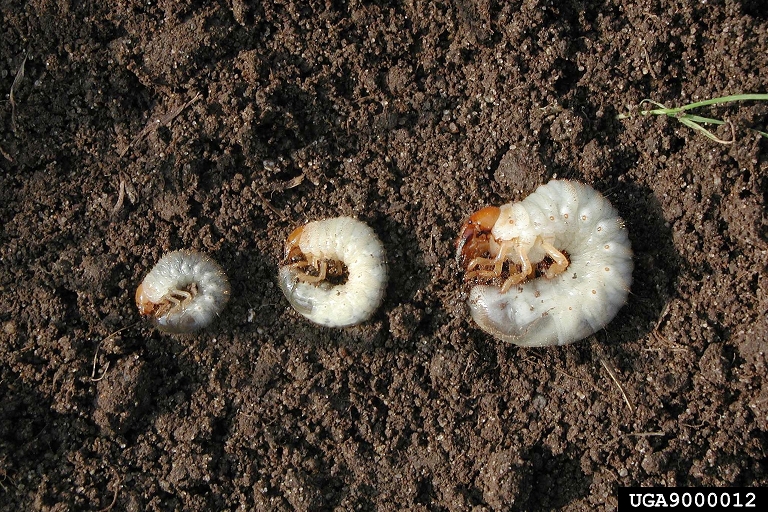Chafer Beetle

Chafer Beetle
(Amphimallon majale)
Tags: Terrestrial
Identification and Reproduction
Identification:
- Adult European chafer beetles are tan or brown beetles that are able 1.5 cm in length. Wing covers have long grooves.
- The grubs, measuring 2 to 2.5 cm, are soft, white, and C-shaped with tan-coloured heads and six prominent legs
Reproduction:
April to Late June
- Adult beetles emerge from the soil and fly to nearby deciduous trees to swarm, mate and feed. After mating, females lay eggs singly in the soil, laying from 20-40 eggs in her lifespan. During this time, beetles cause minimal damage to turf.
July- September
- Eggs hatch in July, and the larvae (grubs) begin to feed on turf grass roots. Infected turf may feel “spongy” when stepped on due to the grubs tunneling underneath. During this time, damages to turf can be seen by brown, dying patches of grass.
October - March
- The grubs grow as they continue to feed in fall and winter. They remain within 5 cm of the ground surface except in freezing conditions, where they burrow deeper into the soil. During this time, damage to turf is most serious. Birds, skunks, and other predators dig up grasses to feed on the mature grubs. The grubs continue to feed until they pupate (undergo metamorphosis) to become adult beetles in May.
Habitat & Ecology
- They are a nuisance because the grubs feed on the roots of all kinds of different plants, including turf and grass, destroying the plants.
- Their life cycle is only one year long.
- Their population rapidly increases.
- In Metro Vancouver they are confined to turfgrass habitat and have not been observed on agricultural or natural areas.
Impacts
- European Chafer Beetle reproduces rapidly and is difficult to manage.
- The grubs feed on the roots of grass and turf used for lawns. If food is scarce they may feed on vegetable plants: corn, potatoes, blueberries, strawberries, and other crops, seldomly resorting to conifers.
- As the larvae feed on the roots it will kill and leave large patches of of brown dead grass.
- You may also see birds, skunks, and other predators digging up your lawn in search of grubs.
Management
- Keep your turf healthy by aerating, fertilizing, watering and mowing.
- In high traffic areas consider grass replacements such as mulch or paving stones, or use alternative ground covers.
- Check bylaw regulations in your area before using any pesticides.
- Nematodes (Heterorhabditis bacteriophora) can be used as a biological agent to manage chafer beetle.
Check with your municipality on how to purchase a watering permit for nematode application to combat Chafer beetles
Resources
For further details on European Chafer Beetle control please refer to the Metro Vancouver Best Management Practices for the European Chafer Beetle (pg. 10-18)
Download the Metro Vancouver Factsheet on European Chafer Beetle here.
Gardenworks has a Chafer Beetle Tip sheet with details on management.
Photo: Todd Murray, WSU




